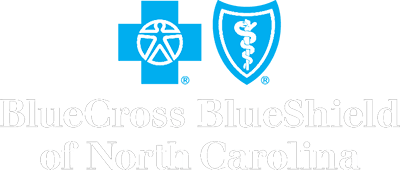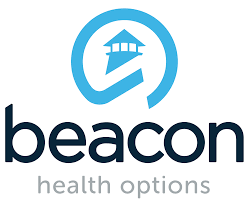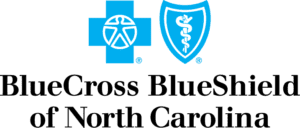Help For Yourself
Help For A Loved One
704-288-1097
Health Insurance Verification Form
Get Started With The Blanchard Institute
Many people that have recovered from drug, alcohol and mental health issues agree that the first step is often the hardest; admitting that there is a problem is not always an easy task, as it requires a large degree of introspection, honesty, and vulnerability.
Naturally, the next logical step after acknowledging that there is a problem is to seek treatment for substance use disorder or alcohol use disorder. There are many levels of care that can be offered to a client depending on their condition, ranging from partial hospitalization to outpatient.
Many factors need to be taken into account to determine the level of care needed for the individual to start their recovery journey, and a family’s budget can be one of those variables. The Blanchard Institute in Charlotte, NC is a preferred provider and In Network with BCBS of North Carolina.
Does Blue Cross Blue Shield Cover Inpatient and Outpatient Rehab?
The good news Is that more and more health insurance companies – such as Blue Cross Blue Shield – offer a degree of coverage for drug rehab and alcohol rehab. Blue Cross Blue Shield also covers other medically necessary treatments that usually run concurrently with rehab, such as group therapy, counseling, psychiatric care, and prescription fills. This is fully dependent on the type of plan that you have and the severity of the problem that needs to be addressed. We do not speak on behalf of your insurance company and you should call your insurance company if you have questions about your plan design and its benefits.
While coverage is determined based on the type of plan you select (more on this below), Blue Cross Blue Shield covers outpatient substance abuse and mental health treatment when there is sufficient medical evidence to show that a client needs this type of rehabilitation. A simple authorization is usually all that is needed. Depending on the plan, Blue Cross Blue Shield may cover a large portion of the cost of treatment as long as the patient takes care of their copay and needs the type of treatment that is offered.
More About Blue Cross Blue Shield
Blue Cross Blue Shield, an insurance company founded in 1929, continues to provide personalized healthcare to clients nationwide. In addition, Blue Cross Blue Shield is one of the oldest and most prolific insurance companies in the United States and covers over 107 million Americans across all 50 states. Blue Cross Blue Shield is able to work with drug and alcohol rehab facilities, healthcare providers, hospitals, and private citizens to offer comprehensive rehabilitation from substance use disorder and alcohol use disorder.
To give you an idea about just how large Blue Cross Blue Shield is, consider that more than 96% of hospitals and 95% of specialists/doctors contract with BCBS companies and subsidiaries. Behavioral health services are covered by Blue Cross Blue Shield under the categories of mental health concerns and substance use. This type of coverage applies to co-occurring mental disorders, which are all-too-common among the population that suffers from substance/alcohol use disorder.
Health Insurance Plans in North Carolina
There are many different health insurance plans that cover varying degrees of counseling and medical costs based on the type of plan you have and also based on the medical providers status with that insurance company. Generally, if the provider is part of the insurance network that you have, the cost of receiving treatment will be less. Here are some things to look at:
1. Network
Simply put, the network that your health insurance coverage provides is the contracted group of healthcare professionals that can accept your health insurance card. This can include labs, x-rays, primary care physicians, psychiatrists, psychologists, drug and alcohol rehabs, and other professional services. Each health plan and coverage generally has a different number of options for each service in your area. As the size of the network increases, so does the number of doctors, physical rehabs, hospitals, and other health facilities that are available to you under coverage: however, as the size of the network grows, so does the cost of the monthly premium.
Plans that use a local network often cost less, but usually only have a few doctors, facilities, and one major health system in-network. These local network plans are often limited to a county or city as well.
2. Copayments, Deductibles, and Coinsurance Plans
There are two main types of health insurance plans: deductible /coinsurance plans and copayment plans. The name of the plan will determine how you’ll pay for the health service, pharmacy, doctor, rehab, or hospital.
- Copayments: A copayment is the flat rate that you pay for an in-network service during the treatment. For example, if you walk into a doctor’ office, you’ll be paying a $20 copay instead of a $250 out-of-pocket charge. Copay plans tend to be more expensive, but offer more coverage.
- Deductible: A deductible plan sets a dollar amount that you’ll have to pay before health coverage kicks in.
- Coinsurance: A coinsurance is simply your share of the bill that you split with your health insurance based on a pre-determined rate.
The amount that you’ll have to pay in terms of the copayment, deductible, and coinsurance rate is dependent upon the level of plan you decide to go with. You’ll typically spend less in deductibles and copayments with a higher level plan, but you’ll also spend more in a higher monthly premium. You should consult with your health insurance carrier or a licensed insurance expert to fully understand the costs of your plan.
3. Level of plans (Metallic Levels)
The level of a heath insurance plan is based around the 2020 Affordable Care Act (ACT). The metallic levels (bronze, silver, and gold) were created by the ACA to represent the value of coverage that a particular plan offers. The higher the monthly cost, the more the plan will pay on medical costs on average. This tiered system allows you to easily compare co-payments, deductibles, coinsurance percentages, and the monthly premiums you’ll pay. More coverage may make more sense for some people, while less coverage may make sense for people who do not run into very many medical bills. This information is all an estimate and not an actual representation of what your insurance plan will cover:
- Bronze: These plans will pay for roughly 60% of your medical costs and you’ll pay the remaining 40%. Good for individuals who do not need a lot of monthly care, and only want protection from the worst-case medical scenarios, such as trauma care. The monthly premium will be lower, and most of the routine coverage scenarios will have to be paid for by you.
- Silver: These plans will pay for roughly 70% of your medical costs and you’ll pay the remaining 30%. If you are willing to pay a higher premium than bronze to have more routine medical procedures covered, this is the way to go.
- Gold: These plans will pay for roughly 80% of your medical costs and you’ll pay the remaining 20%. These plans are used by people who need a lot of care month by month and are willing to pay more in monthly premiums.
For example, the high monthly premium cost of the Gold tier may be worth it if you have a large number of routine visits per month, such as monthly psychiatrist, psychologist, and treatment visits. The higher the tier of the plan, the larger your network will be. Depending on your own individual situation, you may qualify for subsidies to help pay for your insurance.
4. Subsidies
A subsidy is a type of financial assistance that is offered by the federal government to help make health insurance cost-effective for the average American. There are many variables that can qualify a family and an individual, based on their household size and their income. The two types of subsidies are known as Advanced Premium Tax Credit (APTC) and Cost Sharing Reductions (CSRs).
To qualify for financial assistance under new health coverage, you must:
- Live between 100%-400% of the Federal Poverty Level (FPL)
- Not be eligible for other federal or public coverage, such as Medicare, Medicaid, coverage through the armed services, or the Children’s Health Insurance Program (CHIP)
- No access to affordable insurance through your employer. These standards are defined by the health marketplace based on the percentage of a premium you would be responsible for.
Using Blue Cross Blue Shield to Pay for Rehab
The benchmark for in-network rehab is usually a copay payment scheme, while out-of-network treatment centers will usually also have a deductible to pay. This is why it is preferred to choose a plan that is in-network with the facility that you or a loved one wants to go to. You’ll end up paying less by choosing a facility that is in your health insurance network. Knowing the difference between an HMO, a PPO, and an EPO can help you decide which plan is right for you.

What is the Difference Between an HMO, PPO, and EPO Health Insurance Plan?
In order to choose the best plan for yourself or a family member thinking about going to rehab, an understanding of basic plan types is suggested:
- HMO – An HMO is a Health Maintenance Organization. HMO’s usually have lower monthly premiums, and also exhibit lower cost-sharing when compared to plans with fewer network restrictions. These types of plans require a primary care provider (PCP) referral for treatments like drug/alcohol rehab, and generally won’t pay for care that is out of their network (except in emergencies).
- PPO – A PPO is a Preferred Provider Organization. A PPO prefers to use their list of providers that are itemized in their network; however, a PPO will still pay for your out-of-network care. These plans usually have a greater monthly premium because they are less restrictive and sometimes require a larger degree of cost-sharing. PPO’s are common in employer-sponsored plans, but are beginning to disappear in individual plans.
- EPO – An EPO is an Exclusive Provider Organization. EPO’s have a list of providers that they use exclusively in their network. They will not pay out if you decided to go out of their network for care. These plans do not require a referral from a primary care physician and are closer to PPO’s without coverage for out-of-network medical care.
To sum up, we always recommend clients to obtain health insurance that is in our network of care. The Blanchard Institute is in-network for Blue Cross Blue Shield, Optum, United HealthCare, United Behavioral Health, Tricare, and Multiplan in North Carolina. For a complete list, contact us to find out if you are in-network!
Drug and Alcohol Rehab North Carolina
When you need experienced, caring professionals to help a friend or a loved one that is dealing with alcohol use disorder or substance use disorder, place trust in the team at The Blanchard Institute. As one of the East Coast’s top drug and alcohol rehabs in North Carolina, we provide a full range of care for our clients based on a holistic approach. We assume leading roles in the lives of our clients’ recovery and combat the disease of addiction at its root.
To learn more about our drug and alcohol rehab in Charlotte, North Carolina, contact us today at (704) 288-1097.
Insurances We Accept











Health Insurance Verification Form

